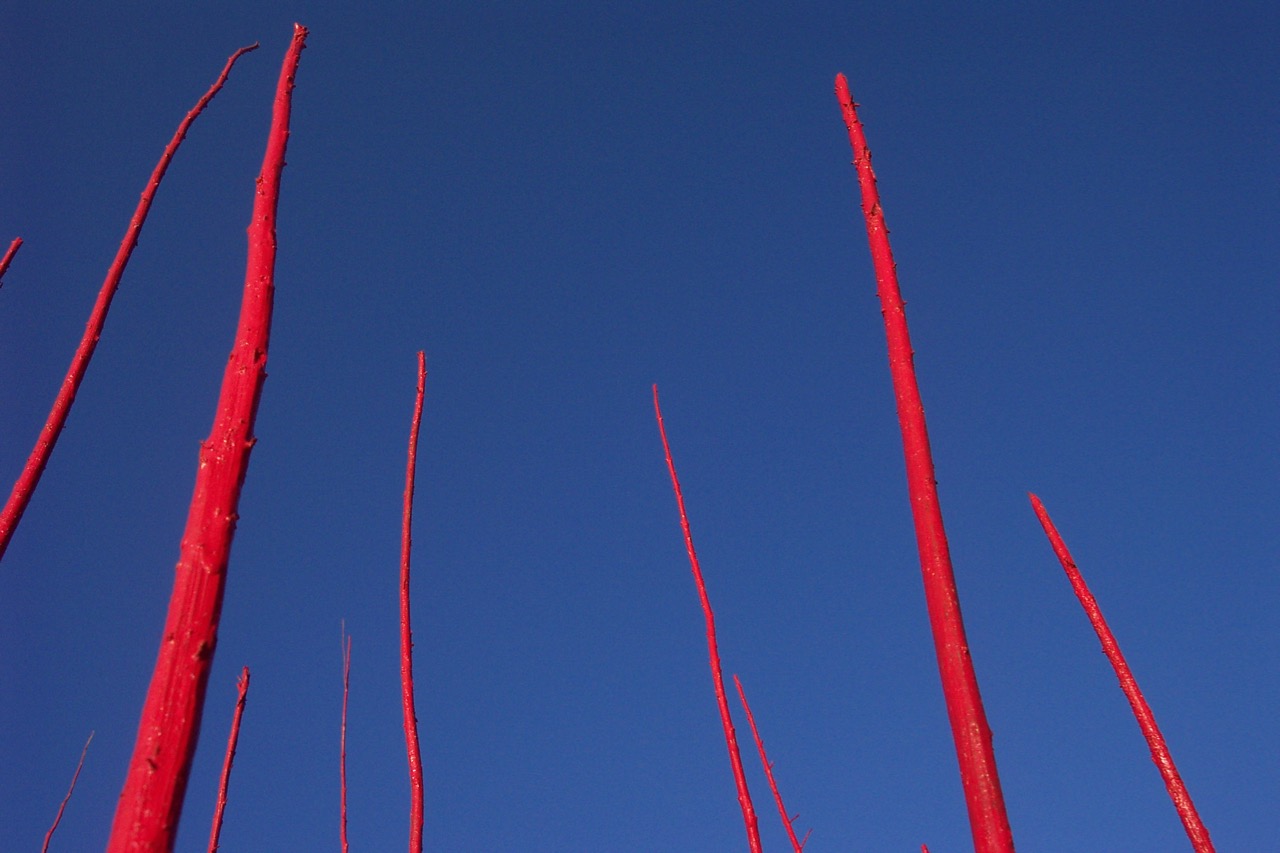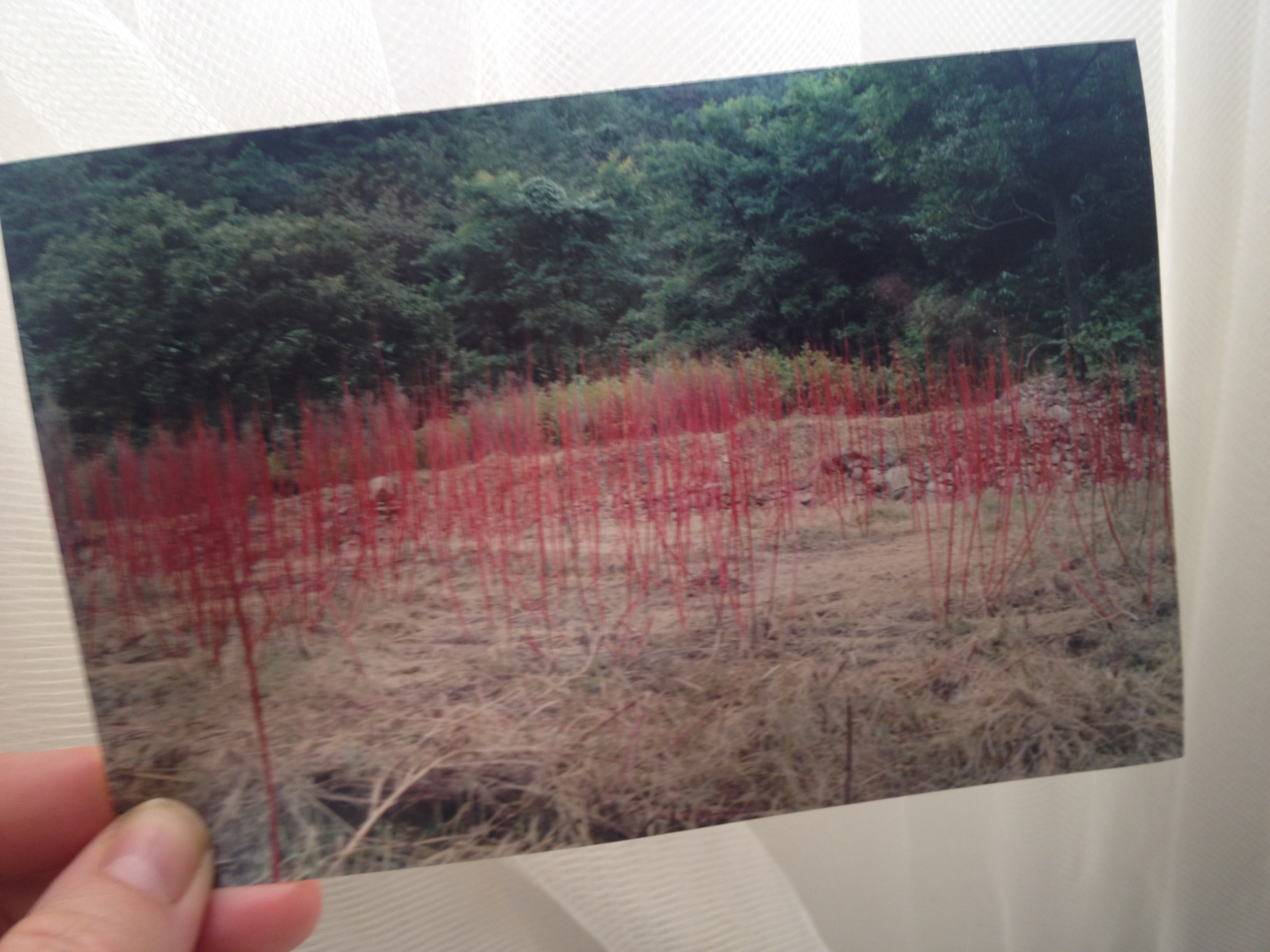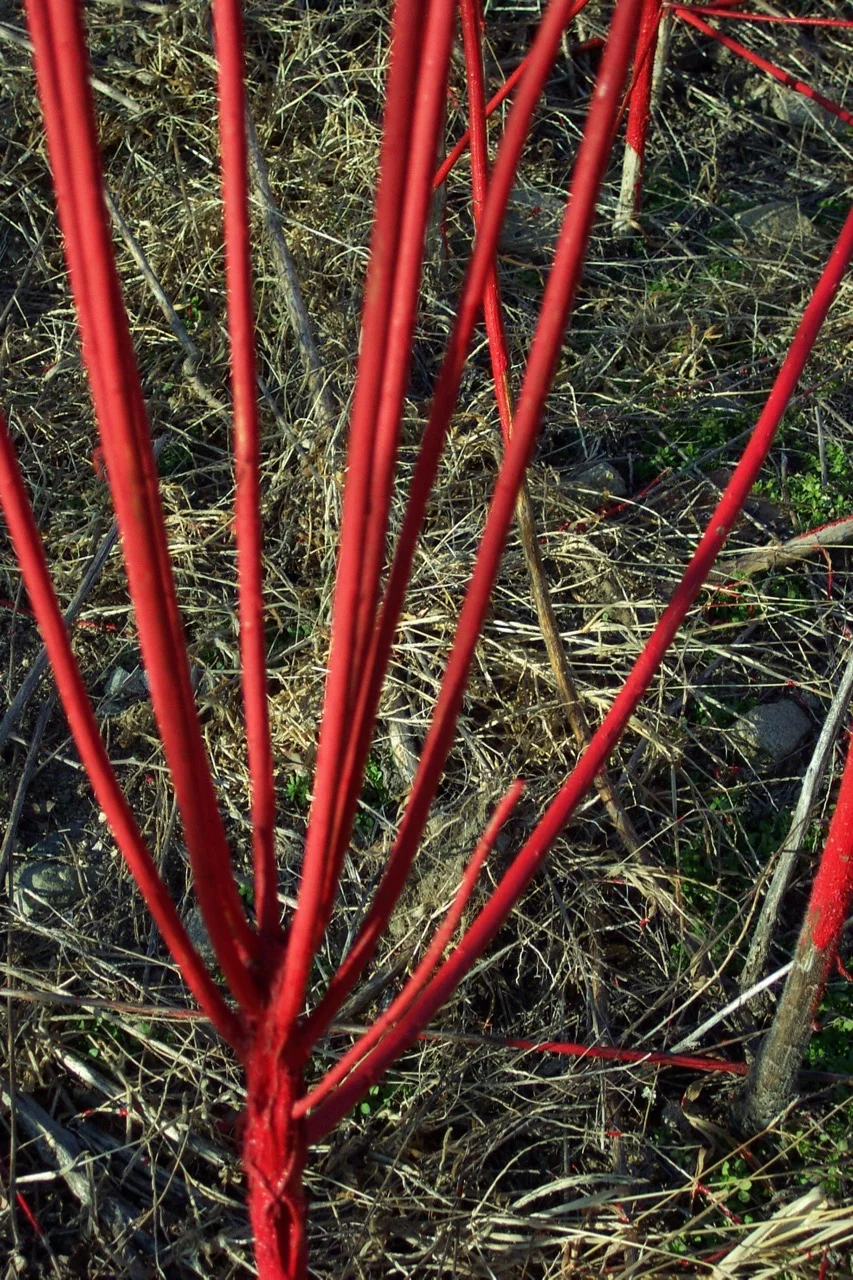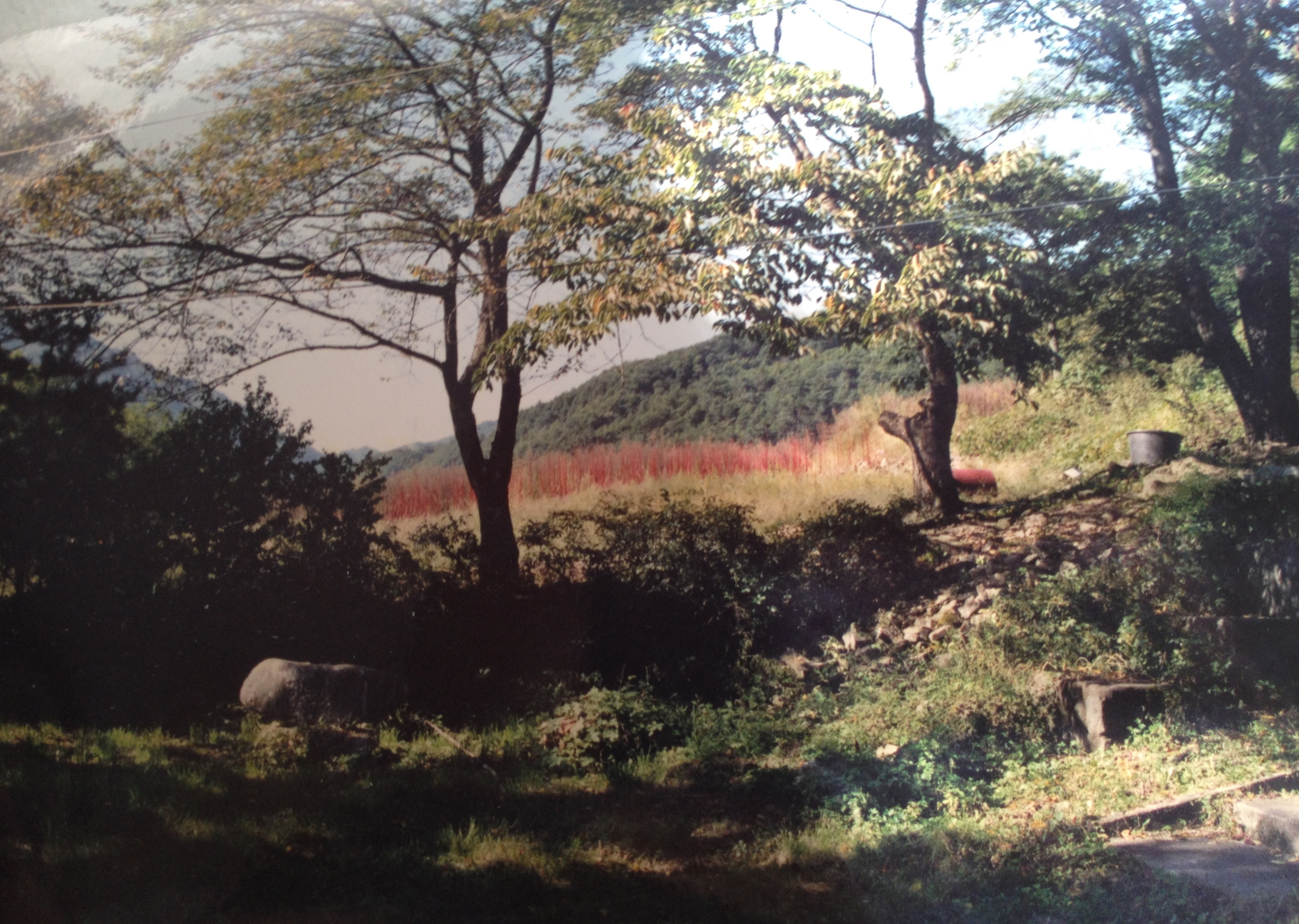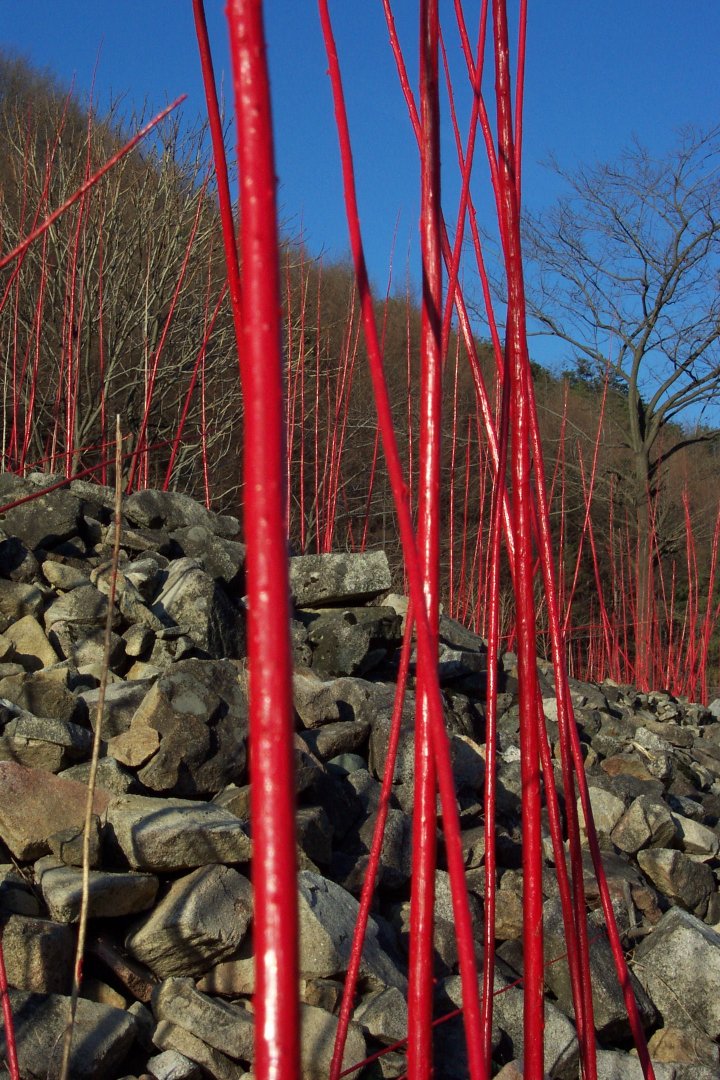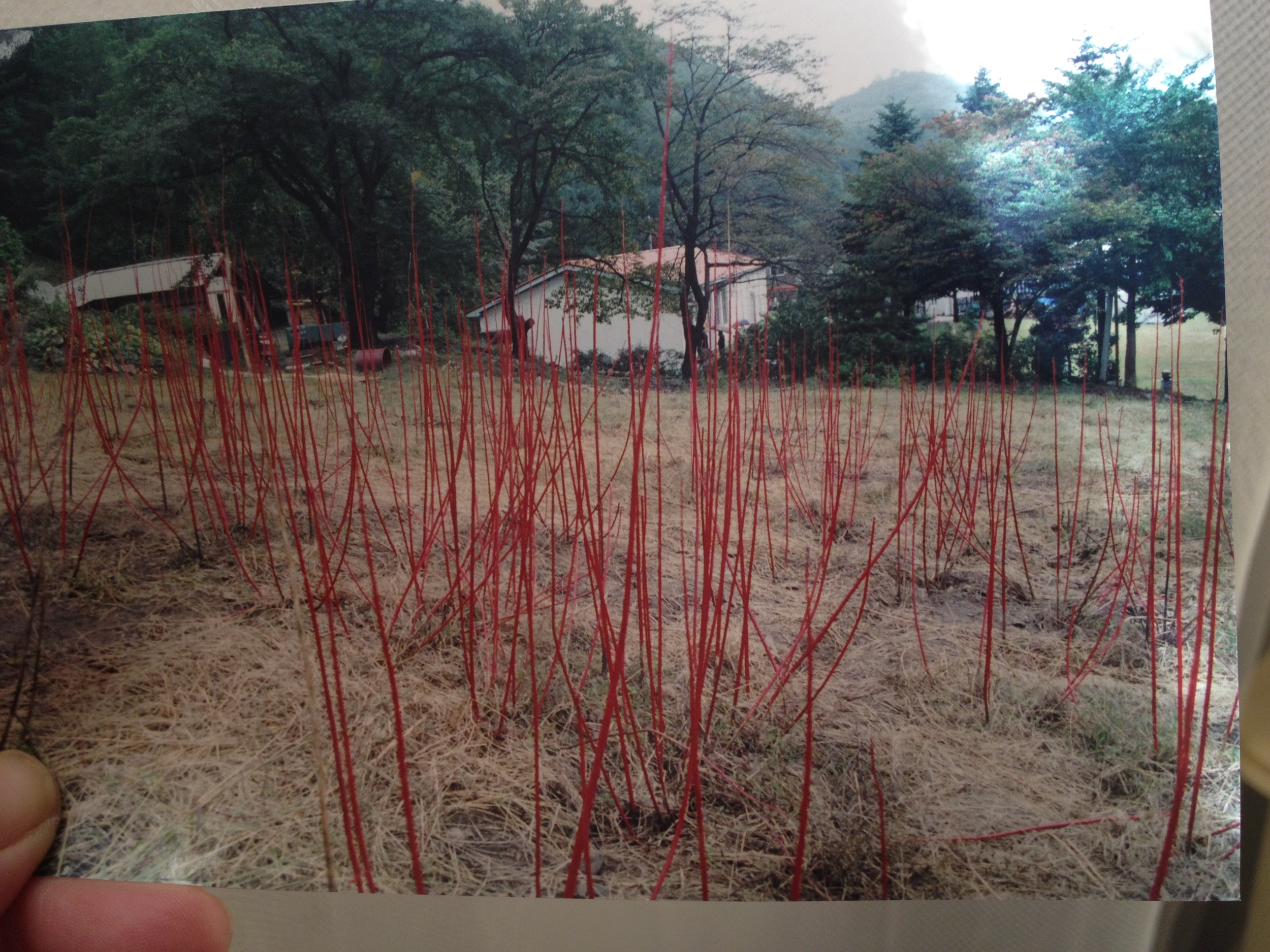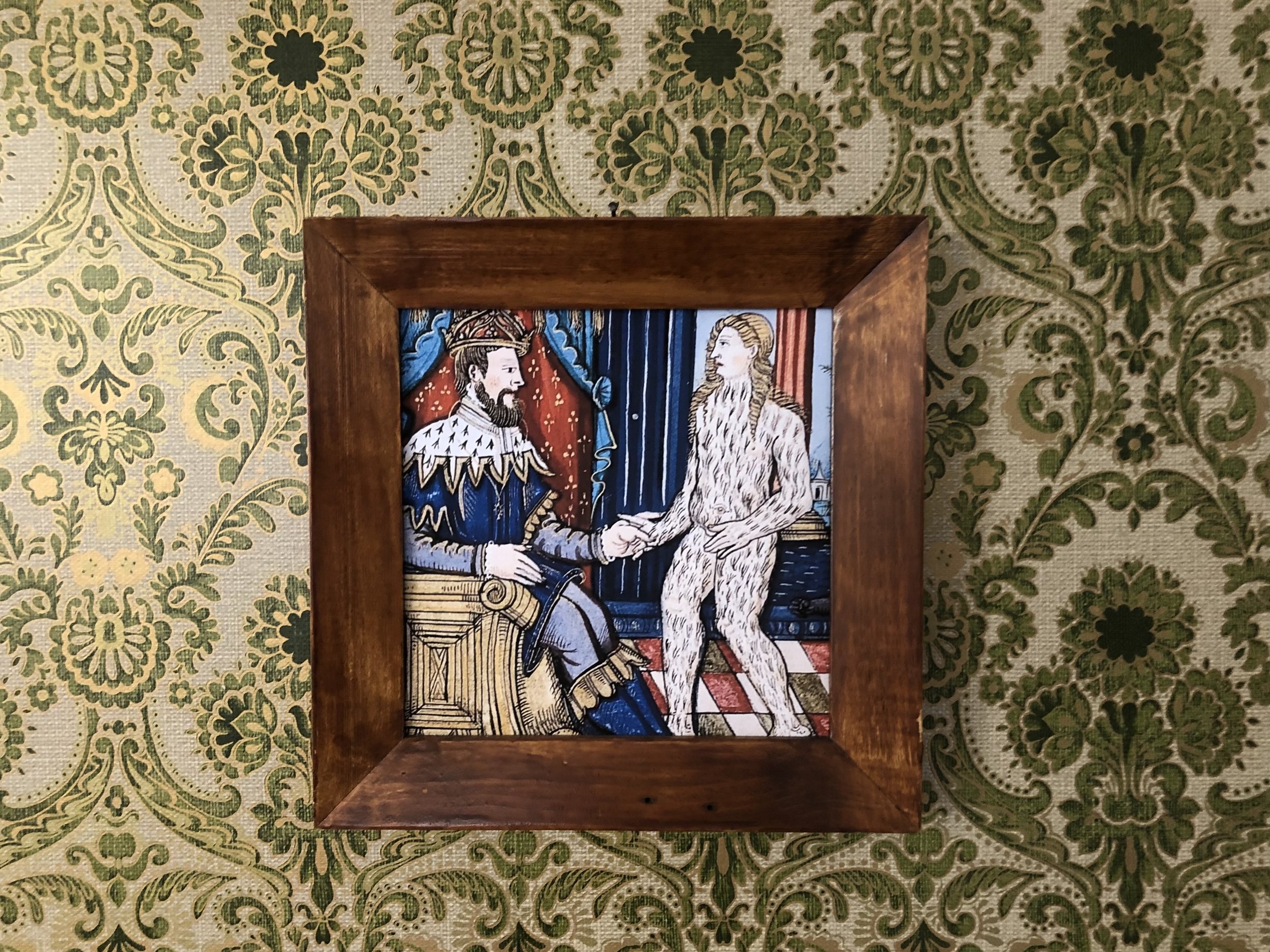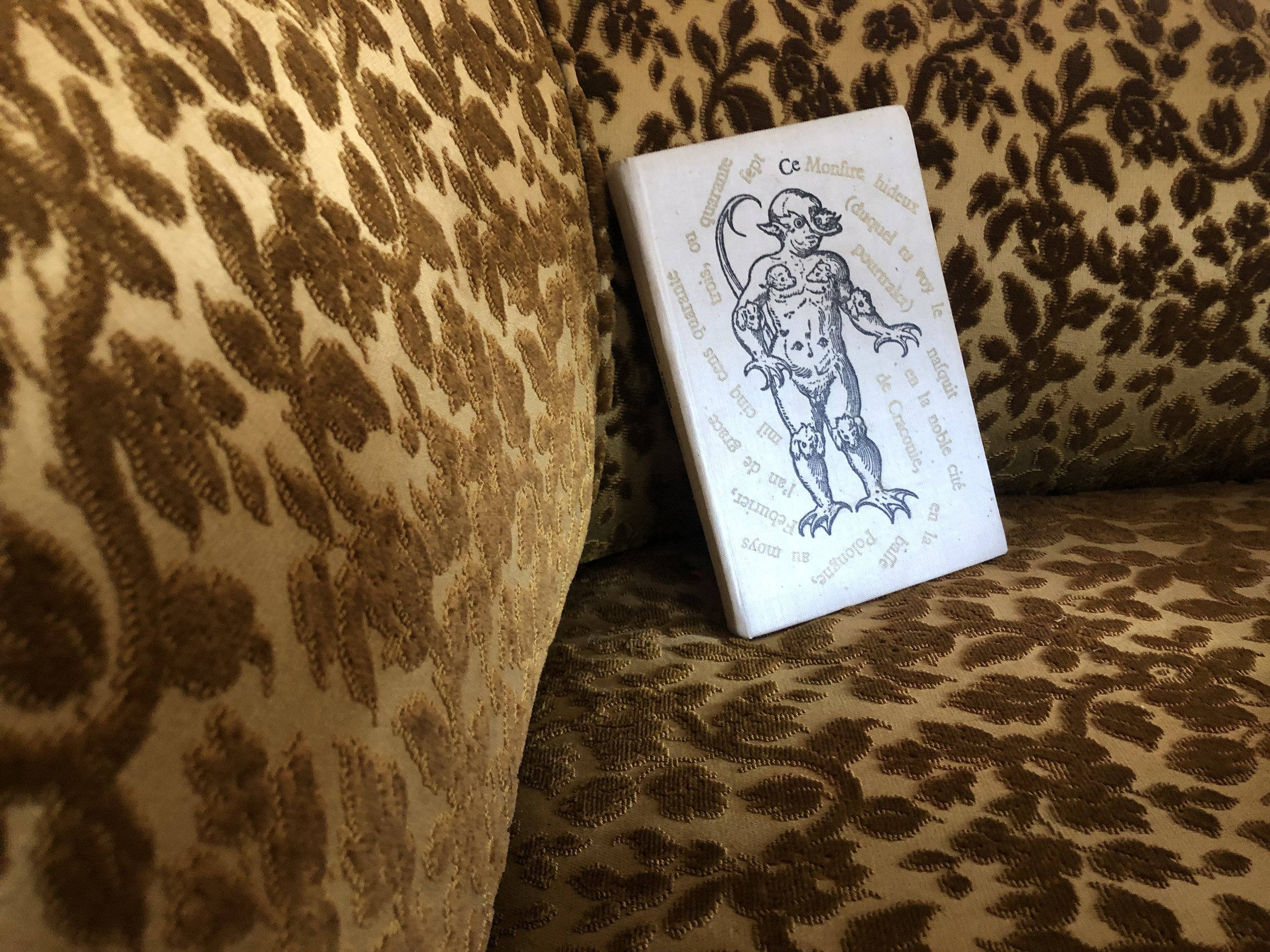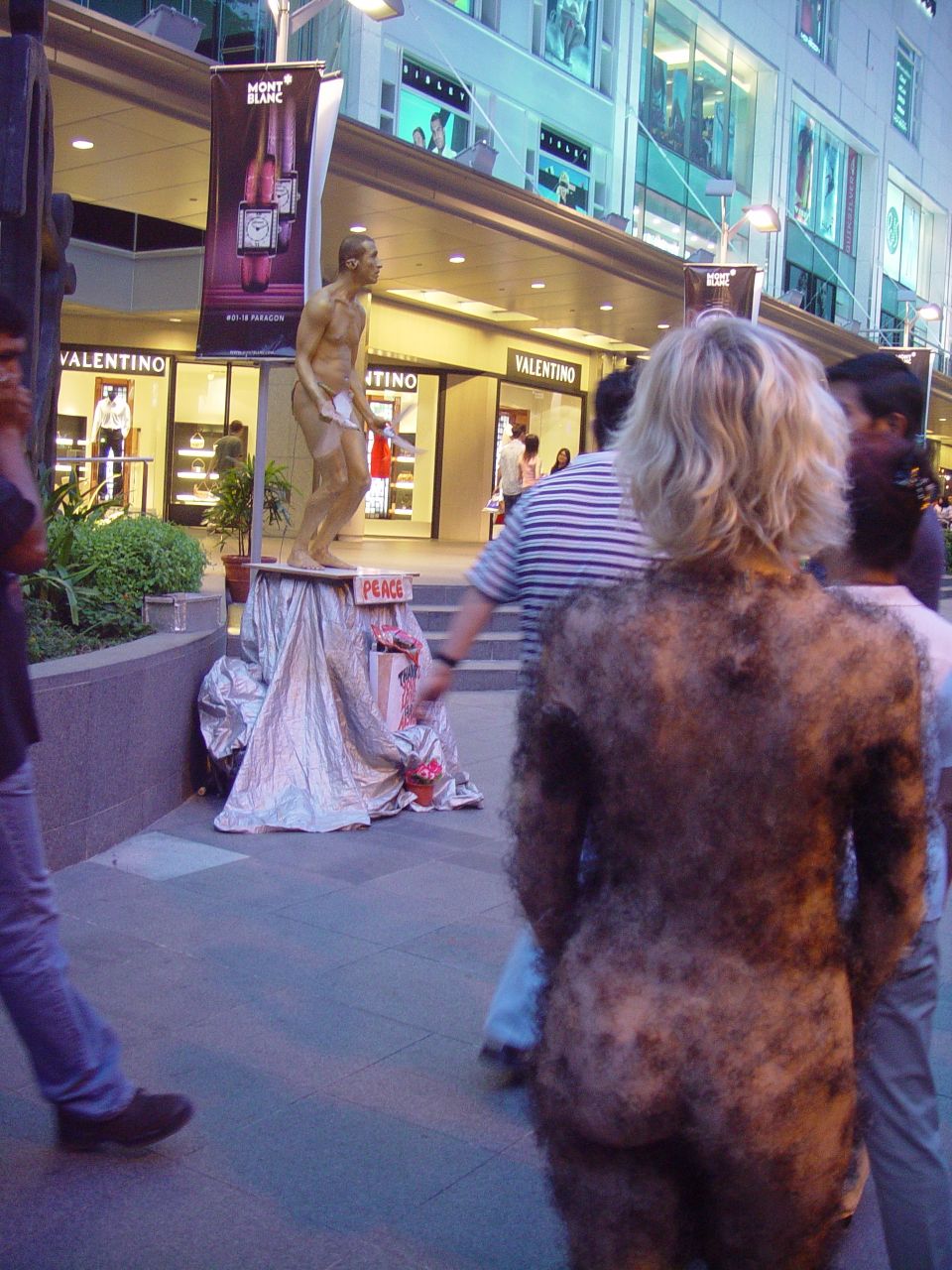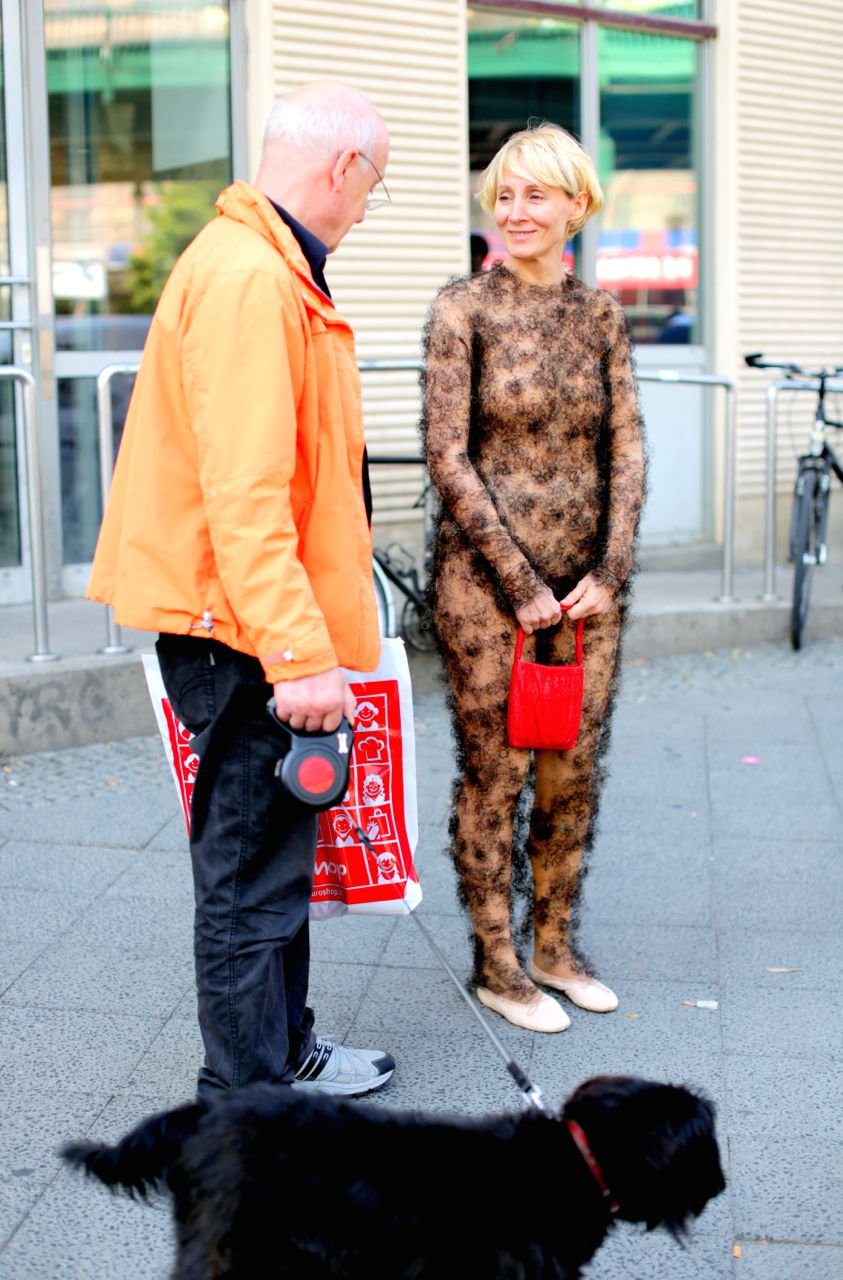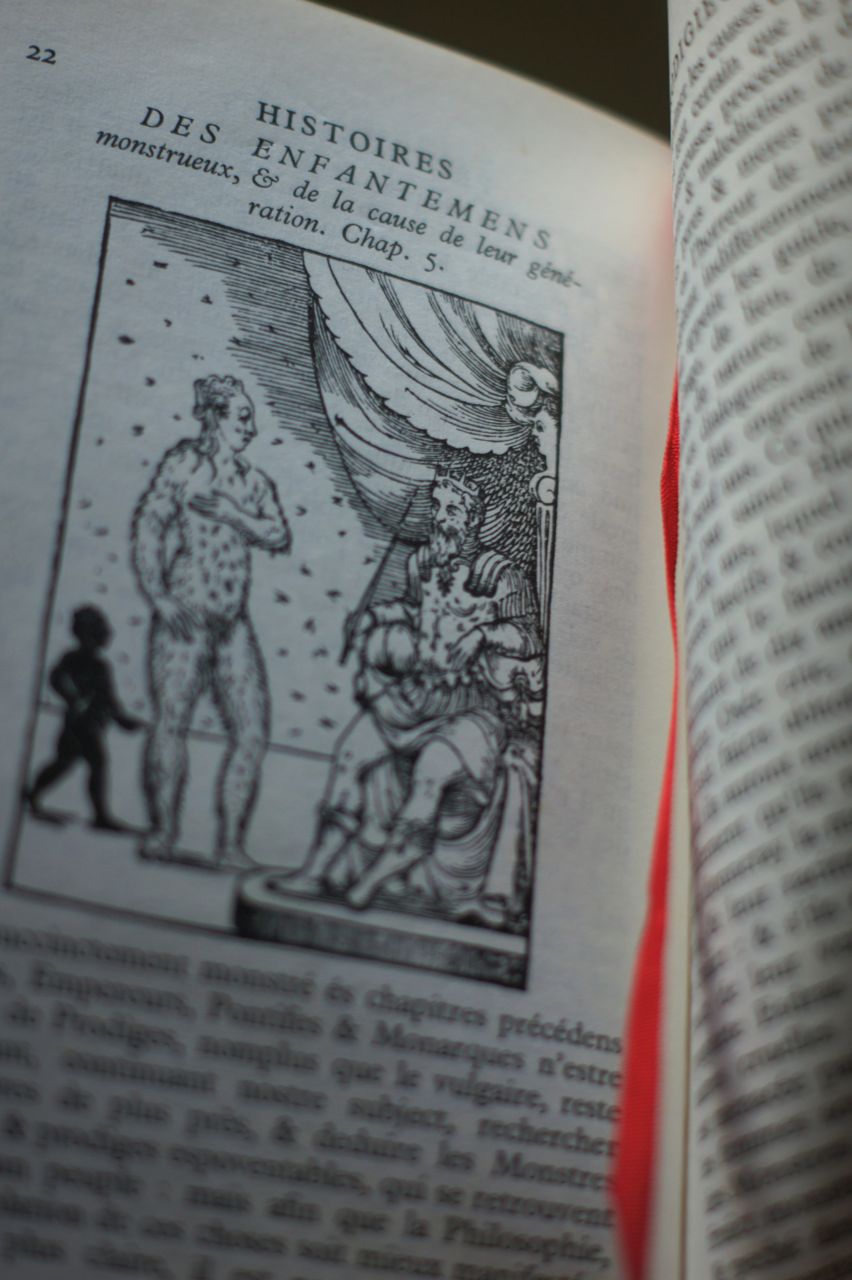by ANDREE WESCHLER (FRANCE) and CHUA KA-INN (SINGAPORE)
It started with collaboration between two artists and the landscape, a dialogue among the three elements. Having come from two very different environments, it was their first visit to the Kangnung landscape. Thus begins the communication between nature and human experience.
The intention of the artwork was to extract a line from the landscape, to make simply a drawing, adding or erasing. They started to rework the original beauty of nature, changing the form of the field of dried autumn flowers, according to the way the nature guides them. The flowers, the most beautiful part of the plant, were stripped bare, revealing only the once hidden thin dried stalks, stems painted red.
As the work progresses, perceptions became varied and interchangeable. New experiences, discoveries and visions became important in the process of creating an artwork out of nature.
The idea was to create a sexual landscape, an exchange of nature with human nature. Where the beauty of the nature invokes in our senses a feeling of sensual desire, a desire to be one with nature, sexuality, a most basic pure form of human nature, is invoked in the landscape.
